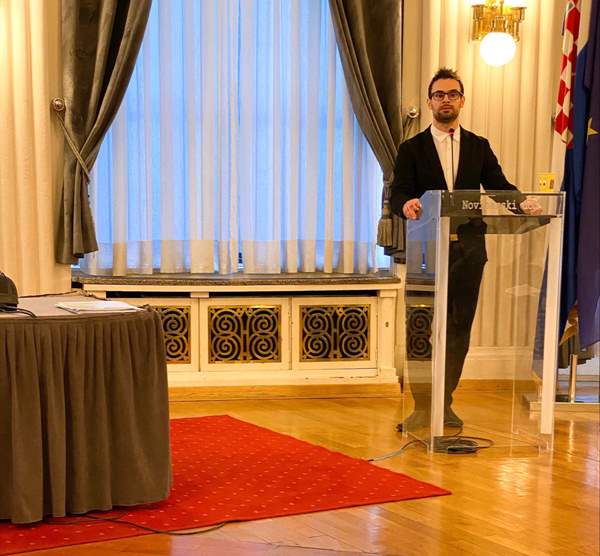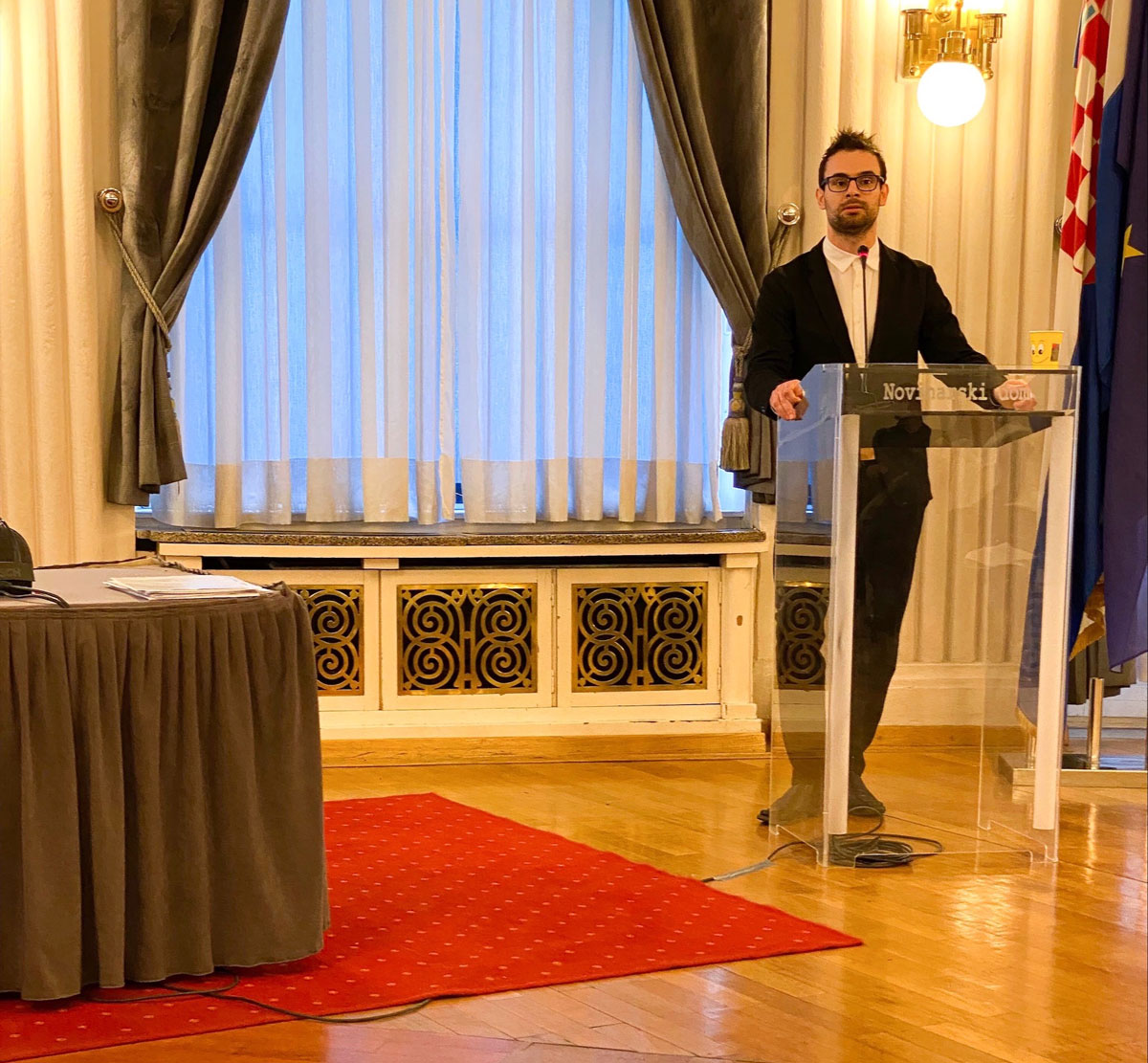
Daniel Siter lectured at a trilateral international scientific seminar

Daniel Siter participated as a lecturer at the trilateral international scientific seminar ("The Holocaust as a Starting Point"), which took place between 22 and 24 March 2022 in Zagreb.
In the ceremonial hall of the Journalists' House, he delivered a lecture on the specific practices of the Nazi expulsion and eviction of the border population from the Obsotelje area during the Second World War. The lecture, simultaneously translated into Croatian, was intended for primary and secondary school historians from Italy, Croatia and Slovenia.
The event was organized by the Mémorial de la Shoah Documentation and Education Center in Paris and co-organized by ETTA, the Ministry of Education in Italy and the National Education Institute of the Republic of Slovenia.
At the beginning of the lecture, Siter pointed out the horrifying fact that the German occupier sentenced the Slovenes to death immediately after the occupation. "Of all the occupied nations in occupied Europe, Slovenes were subjected to one of the quickest destructions of the nation as an ethnic unit (the so-called ethnocide) by the Nazis," he said. He supported the latter with the information that "according to Nazi ideas, Slovenes would disappear from the space of the announced Third Reich in a maximum of five years, and later they would only become a historical concept."
It is clear from the content of Siter's paper that the Obsotelje border area was of great importance in the wider Nazi context for gaining space for the planned settlement of Kočevje Germans and other Germans, as it ran along the Sotla River (state borders between NDH (the independent state of Croatia) and Nazi Germany and the southernmost border points). Obsotelje was therefore the first protection zone against the intrusion of unwanted and disturbing foreign elements into the Lower Styrian occupation zone. By mid-September 1941, the Germans had envisioned two versions of the emigration belt for Obsotelje, which they wanted to follow in accordance with their denationalization, Germanization, and racial policies.
The author goes on to explain that for various reasons they chose a smaller geographical area (municipalities of Dobova, Kapele, Bizeljsko, Sv. Peter pod Sv. Gorami and half of the territory of the municipality of Polje), from where they planned to expel between 10,000 and 12,000 nationally conscious Slovenes. After racial, hereditary, ethnic, and political examinations of the local population, expulsions from Obsotelje began at the end of October 1941. In mid-May 1941, a special concentration camp for exiles was established near the belt at Rajhenburg Castle (today's Brestanica), from where they were deported to the German Reich area.
After the forced and violent exodus, almost 14,000 Kočevje and other Germans settled in Obsotelje, who during the war served as a protective "people's defender" or "dam" in the area to protect the Germanization of Lower Styria. At the same time, as a kind of defensive farmers, they were supposed to protect the German border from the south-eastern Slavs with "swords and plows".
Siter attended the event on a special invitation from the Institute for Education of the Republic of Slovenia. Last November, his scientific monograph entitled "Rogaška Slatina under the Nazi Swastika: Health Resort during the Occupation 1941-1945" was published, which attracted a lot of interest, demand and media attention, and received extremely positive reviews and other responses.





